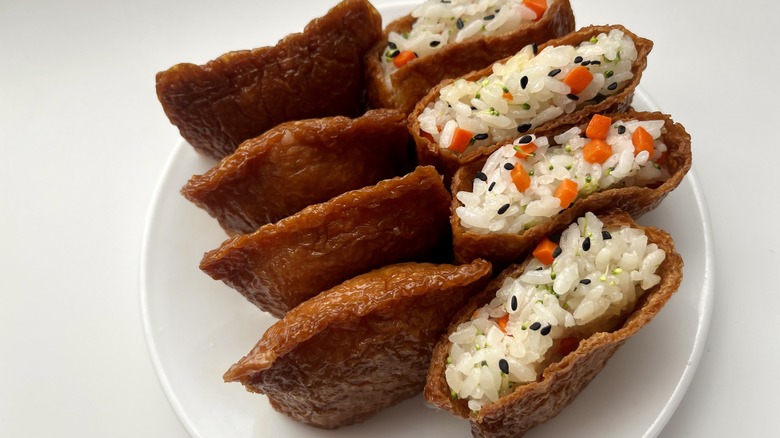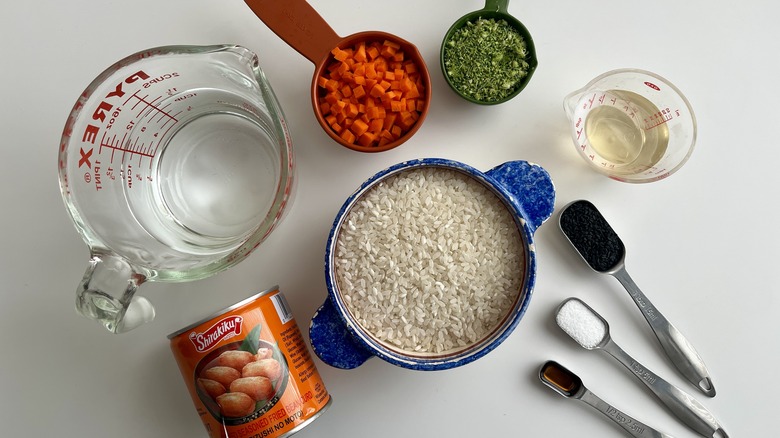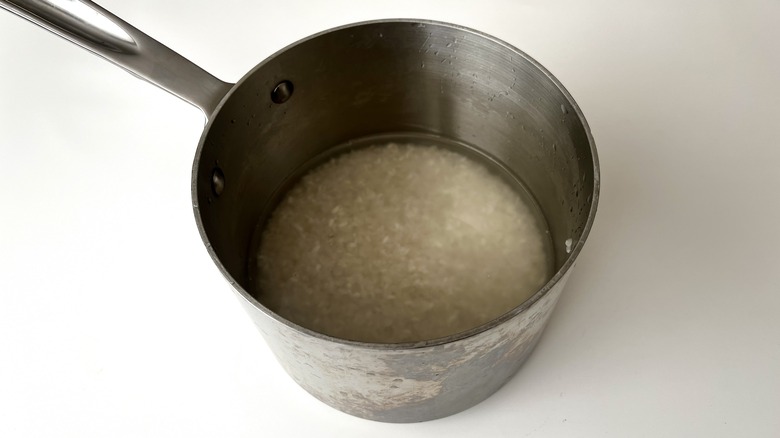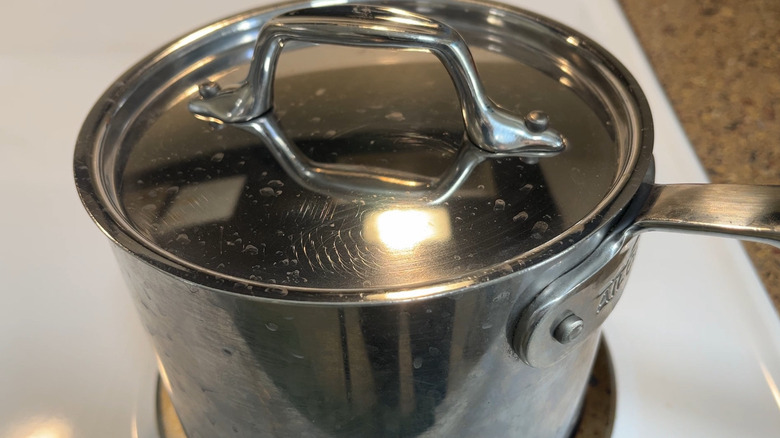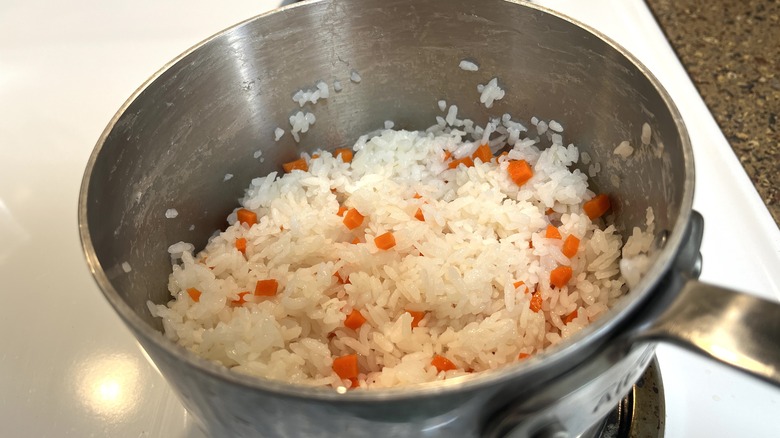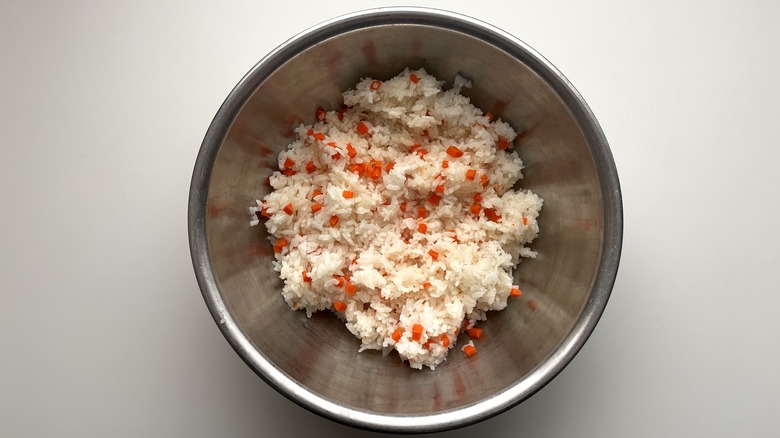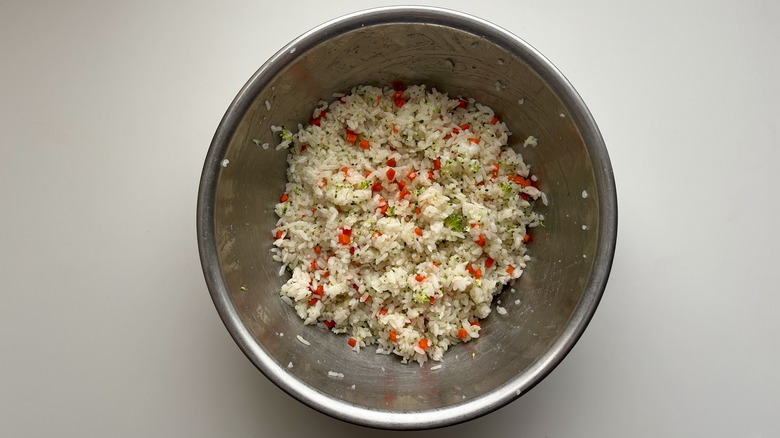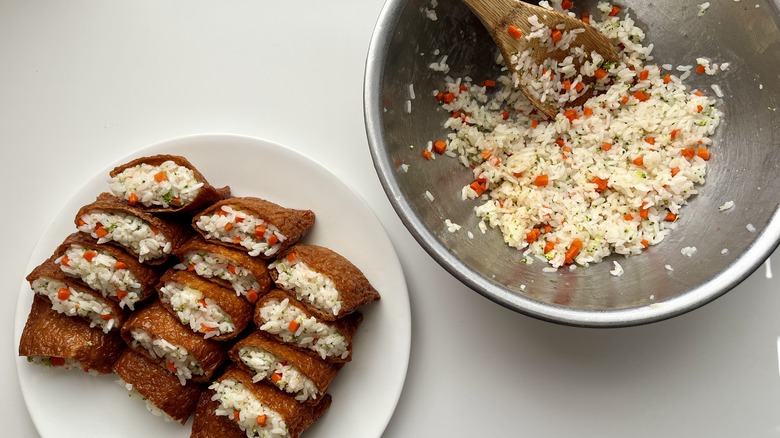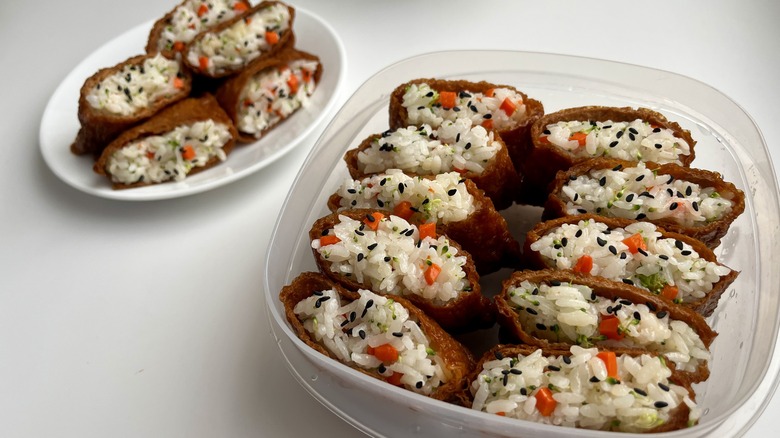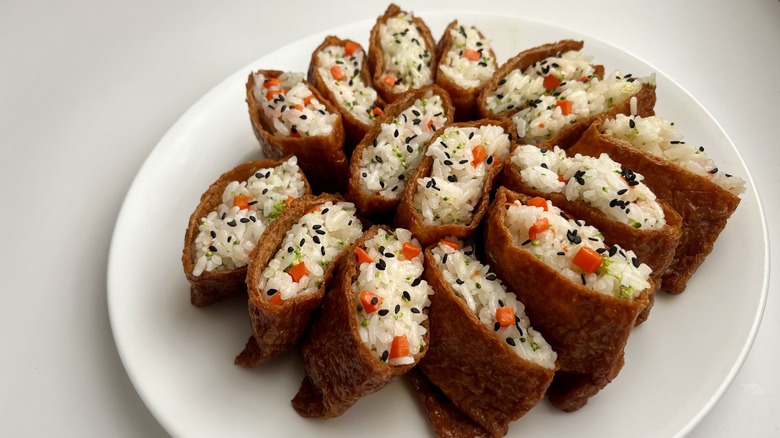Yubuchobap (Korean Fried Tofu Pocket) Recipe
If your idea of going out for sushi is getting rolls that don't contain any raw fish, then you may be familiar with inari. Made with deep fried tofu pockets, these tasty parcels will satisfy your palate with a burst of umami. Korean and Japanese cuisines have some overlaps, and you'll find a version of this dish in both places. Tasting Table recipe developer Tess Le Moing shares this yubuchobap recipe, which is the Korean version of fried tofu pockets.
"My friend's mom made yubuchobap, and I remember eating it for the first time thinking how good it was," Le Moing comments. "This recipe is inspired by that." Made with a simple filling, Le Moing's yubuchobap can easily be customized to include your favorite ingredients. "You can add any additional mix-ins you like," Le Moing says, suggesting options like "tuna or hard-boiled egg for added protein." Chop some green onion into the rice, or mix in a couple of spoonfuls of ground meat for a savory and filling meal. You can't go wrong with these versatile stuffed tofu pockets.
Gather the ingredients for yubuchobap
For this recipe, you'll need water, short grain rice (rinsed and drained), carrots (finely diced), broccoli buds, seasoned rice vinegar, kosher salt (or soy sauce), sesame oil, a can of seasoned fried bean curd, and black sesame seeds.
Step 1: Soak the rice
Add water and rinsed and drained rice to a small pot, cover, and let soak at room temperature for 30 minutes.
Step 2: Cook the rice
Bring rice mixture to a boil over medium-high heat, then lower to a simmer and cook, covered, for 5 minutes.
Step 3: Add carrots
Remove lid, stir in the carrots, cover, and cook for 5 more minutes.
Step 4: Cool the rice
Transfer rice to a large mixing bowl and let cool for 10 minutes.
Step 5: Add broccoli and seasonings
Stir in broccoli buds, rice vinegar, salt (or soy sauce) and sesame oil.
Step 6: Fill the tofu pockets
Carefully open tofu pockets and fill each with about 2 tablespoons rice mixture, using a spoon, cookie dough scoop, or wet hands to gently pack it in.
Step 7: Garnish and serve your yubuchobap
Sprinkle rice with black sesame seeds before serving tofu pockets immediately or storing in the fridge for later.
What is the fastest way to make yubuchobap?
Le Moing offers some advice to simplify the yubuchobap-making process. For starters, anyone who has a rice cooker is well aware of its advantages. "If you have a rice cooker, use it to make the rice," she recommends. "I don't, so that's why I use this stovetop method!" Another shortcut is to buy precooked rice from the grocery store, so you only have to spend a couple of minutes reheating it.
If you are short on time or can't track down fried bean curd, there is an all-in-one option that will make it extra easy to whip up these yummy pockets. "You can also buy kits at your local Asian grocery store to make yubuchobap," Le Moing remarks. "They usually come with rice seasoning packeting, toppings, and tofu pockets, so all you need is rice." This is definitely the quickest way to get yubuchobap on your table without calling for delivery.
How should you serve yubuchobap?
Yubuchobap is a pretty versatile recipe, especially considering you can serve it simply as a light snack or add extra protein or vegetables to round it out. "This is a great vegetarian or vegan snack on its own," Le Moing agrees. She also suggests incorporating it as part of a main course by serving it with steamed veggies. "Speaking of veggies, since you're only using the tiny buds of the broccoli in this recipe, you can steam or roast what's left over and eat it on the side of your yubuchobap." If you want to load up on veggies, stir-fry the rest of the broccoli with your favorite vegetables for a satisfying side.
These aren't a great long-term meal-prep option, as Le Moing comments, "The longer they sit in the fridge, the dryer the rice will become. It's best to eat these as soon as you can." Serve your yubuchobap at room temperature, which makes them a viable option to enjoy for a few hours. "These are perfect for a work lunch, potluck, or picnic as they can be safe to eat at room temperature for up to 4 hours," Le Moing says. Finally, if you do end up with leftovers, she offers a tip to salvage them: "If you find the rice has gotten dry, you can drizzle on some soy sauce or ponzu to give it some added flavor and moisture."
Yubuchobap (Korean Fried Tofu Pocket) Recipe
Korean fried tofu pockets are typically stuffed with rice and veggies but can use anything else you have on hand, making them the perfect fridge clean-out meal.
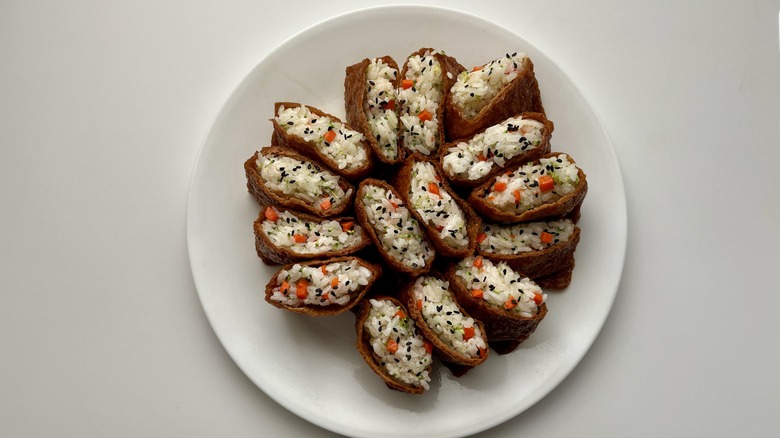
Ingredients
- 1 ½ cups water
- 1 ½ cups short grain rice, rinsed and drained
- ½ cup finely diced carrots
- ¼ cup broccoli buds
- 3 tablespoons seasoned rice vinegar
- 1 teaspoon kosher salt or soy sauce
- ½ teaspoon sesame oil
- 1 (10-ounce) can seasoned fried bean curd
- 2 teaspoons black sesame seeds
Directions
- Add water and rinsed and drained rice to a small pot, cover, and let soak at room temperature for 30 minutes.
- Bring rice mixture to a boil over medium-high heat, then lower to a simmer and cook, covered, for 5 minutes.
- Remove lid, stir in the carrots, cover, and cook for 5 more minutes.
- Transfer rice to a large mixing bowl and let cool for 10 minutes.
- Stir in broccoli buds, rice vinegar, salt (or soy sauce) and sesame oil.
- Carefully open tofu pockets and fill each with about 2 tablespoons rice mixture, using a spoon, cookie dough scoop, or wet hands to gently pack it in.
- Sprinkle rice with black sesame seeds before serving tofu pockets immediately or storing in the fridge for later.
Nutrition
| Calories per Serving | 20 |
| Total Fat | 1.1 g |
| Saturated Fat | 0.2 g |
| Trans Fat | 0.0 g |
| Cholesterol | 0.0 mg |
| Total Carbohydrates | 1.1 g |
| Dietary Fiber | 0.3 g |
| Total Sugars | 0.3 g |
| Sodium | 112.7 mg |
| Protein | 1.7 g |
